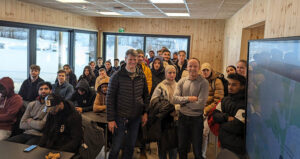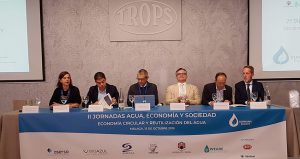Sweden is struggling with neglected water infrastructure

-
 Fergal MacErlean
Fergal MacErlean
Share article:
The water infrastructure in Sweden is neglected. Like the majority of Member States, Sweden faces a need to greatly invest in water infrastructure due to the new Drinking Water Directive (DWD) and the upcoming Urban Waste Water Treatment Directive (UWWTD). With regard to the Drinking Water Directive, Member States had until 12 January 2023 to transpose the Directive into national law and comply with its provisions.
Sweden, which has a low population density, is struggling with neglected water infrastructure. The country’s infrastructure for drinking water and sewage is estimated to have an annual investment need of SEK 31 billion (€ 2.75 billion). That is according to a May 2023 report from Svenskt Vatten, the country’s trade association for water and sewage organizations among other important national entities.
Growing underinvestment
It states that the annual investment rate is around SEK 20 billion (€ 1.77 billion euro) and in 2021 the drinking water and sewage organizations invested SEK 21 billion (€ 1.86 billion euro). This means an annual recurring underinvestment of approximately SEK 10 billion (€ 885 million euro) and a growing investment debt.
Renewal infrastructure postponed
The report ‘Investment needs and future costs for municipal water and drains– an analysis of investment needs 2022-2040’ notes that the trend from the previous Svenskt Vatten investment report (2020) ‘remains and has been strengthened’. Worryingly it adds that ‘the need for renewal of existing infrastructure is great’ but that it is ‘postponed to the future’.
Rising water prices
In 2016 Water News Europe reported on the Swedish Water and Wastewater Association concern over the ‘urgent’ need for investment. Experts warned the neglected water infrastructure would increase water prices. In relation to the recast Drinking Water Directive the report highlights that there is a requirement for ‘an active search for contamination and, above all, that we remove more contamination than before’.
PFAS contamination increasing
Providing clean drinking water by using groundwater in Sweden in the future is a major societal challenge that many are not aware of, Philipp Wanner, Associate Professor in Geology at the University of Gothenburg, said last November. A recent study showed that in almost 75 per cent of the Swedish groundwater PFAS can be detected. “The high quality of groundwater is no longer guaranteed, and the issue of water treatment is increasingly necessary in Sweden,” Wanner said.
Lower PFAS threshold drinking water
The Swedish National Food Agency will lower the threshold value for PFAS in drinking water in 2026 to four nanogram per litre for the sum of four PFAS compounds. This revised threshold value will force the drinking water producers to increasingly treat the drinking water in Sweden from 2026 onwards to comply with the new threshold value. Currently two million Swedes – just less than 20 per cent of the Swedish population – have PFAS concentrations in their drinking water that exceeds this revised threshold value.

















